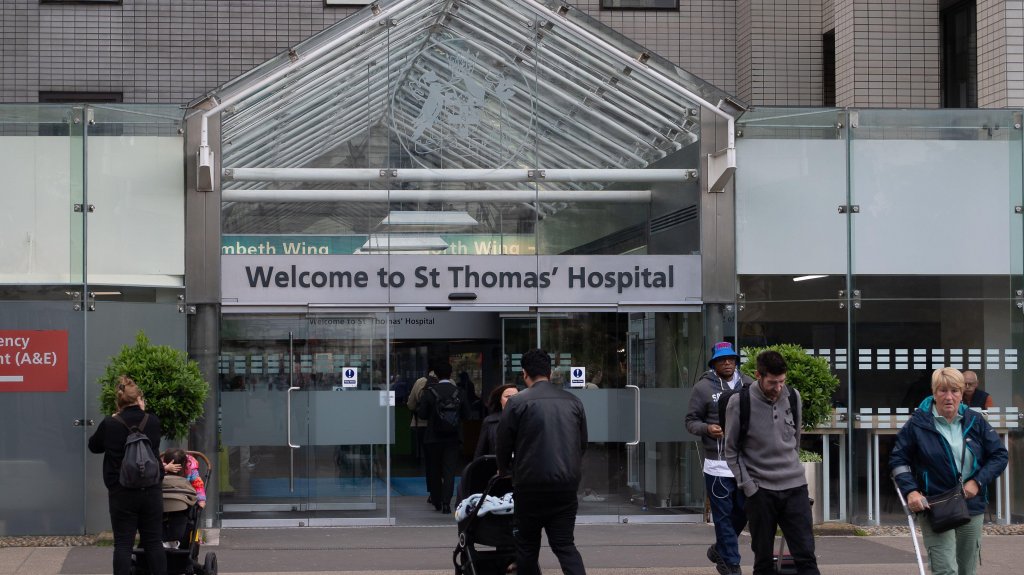Understanding the Budget Changes: Capital Gains Tax, Inheritance Tax, and Stamp Duty Impacts
Rachel Reeves’ inaugural budget announcement has introduced record tax increases totaling £40 billion, prompting significant changes in national insurance contributions, capital gains tax, and inheritance tax policies for pensions.
This article outlines the implications of these changes and suggests proactive steps you may want to consider.
Currently, pensions can be inherited without being subject to inheritance tax, but this favorable rule will end in April 2027. Post this date, pensions will be treated like other assets and included in the estate’s valuation.
Individuals can inherit £325,000 tax-free, increasing to £500,000 if the primary residence is passed to immediate descendants (such as children or grandchildren), provided the estate is valued under £2 million.
These alterations mean that individuals planning to leave their pension funds untouched for future generations will need to reassess their strategies.
Next steps: A consultation will examine the details of these changes. However, individuals are advised to refrain from making hasty financial choices.
Investment expert Tom Selby from AJ Bell highlighted that immediate actions to withdraw funds from pensions can result in hefty tax liabilities.
Typically, pension holders can access 25% of their pension as a tax-exempt lump sum, capped at £268,275.
“It’s crucial to get regulated financial advice regarding these changes,” Selby emphasized.
Implications for Property Buyers
Property buyers can expect increased stamp duty starting in April.
Currently, there is no stamp duty on properties priced below £250,000, with tax applied to the portions exceeding that threshold.
Stamp duty rates currently stand at 5% on properties from £250,001 to £925,000, 10% from £925,001 to £1.5 million, and 12% on above £1.5 million. Different rules apply for additional properties.
From April, the threshold for stamp duty will be lowered to £125,000, with a 2% rate on values between £125,000 and £250,000. This adjustment will elevate the stamp duty liability on a £500,000 property from £12,500 to £15,000.
First-time buyers currently enjoy a zero-rate stamp duty on homes priced up to £425,000, with a 5% rate on the segment between £425,001 and £625,000. Starting in the next fiscal year, the first-time buyer threshold will decrease to £300,000, applying a 5% rate for prices between £300,001 and £500,000, thereby raising the liability on a £500,000 property from £3,750 to £10,000.
Next steps: To avoid higher taxes, buyers should expedite their purchase processes.
“Those intending to utilize the current thresholds will need to finalize their purchases before the end of March,” advised Tom Bill from Knight Frank. “With significant savings at stake, there might be an uptick in last-minute property transactions.”
Purchasing a home is a substantial commitment, so it’s advisable to avoid rushed decisions. Considerways to accelerate the conveyancing process, consult with a mortgage advisor early, and promptly apply for a mortgage once an offer is accepted.
For Landlords and Buyers of Second Properties
Stamp duty will also rise for purchases of additional properties valued over £40,000, such as buy-to-let or holiday homes.
Previously, these buyers incurred an extra 3% stamp duty, but this has increased to 5% following the budget updates.
A second homeowner purchasing a property priced at £300,000 would have previously paid 3% on the first £250,000 and 8% on the remaining £50,000, totalling £11,500 in stamp duty. The new rate means they will now pay 5% on the first £250,000 and 10% on the next £50,000, resulting in a total tax bill of £17,500.
Next steps: While avoiding stamp duty is challenging, the increased levy might discourage some from expanding their investment portfolios.
Couples not married could individually hold properties to sidestep the extra tax, but this arrangement demands a degree of trust and planning. This option isn’t applicable to married couples as they are recognized as a single entity for tax purposes.
“Individuals considering substantial investments might explore the stock market instead to avoid added costs from property transactions,” advised Alex Shields from The Private Office.
Workers Facing ‘Stealth Taxes’
While direct tax increases for workers were absent, ‘stealth taxes’ remain prevalent as income tax thresholds will be frozen until 2028, although they are scheduled to rise with inflation afterward. This phenomenon, known as fiscal drag, means that as wages climb, more individuals will enter higher tax brackets without any threshold adjustments.
Currently, individuals earn the first £12,570 annually tax-free, thereafter incurring a 20% tax rate up to £50,270, 40% up to £125,140, and 45% on earnings exceeding that. These thresholds have been stagnant since 2021, with a loss of £1 in tax-free allowance for every £2 earned over £100,000, vanishing entirely at £125,140.
As a consequence, an estimated 15% of workers are projected to be higher-rate or additional-rate taxpayers by 2028, compared to 6% in 2010, according to the Institute for Fiscal Studies.
Next steps: If feasible, increasing your pension contributions can offer a strategic way to avoid stepping into higher tax categories.
Contributions made to workplace pensions are deducted from your salary pre-tax. For instance, a basic-rate taxpayer contributing £100 to their pension effectively only loses £80 of take-home pay, benefiting from a £20 boost from government contributions.
Additionally, employers may contribute to pension funds through auto-enrolment strategies, where employees over 22 earning at least £10,000 are automatically enrolled, contributing a minimum of 5% while employers add an additional 3%.
“Utilizing salary sacrifice strategies can also be beneficial, as organizations do not incur national insurance on pension contributions,” suggested Rachael Griffin from Quilter.
Investment Changes
Capital gains tax (CGT) applies to profits from selling assets like shares, property, and personal valuables exceeding £6,000.
Prior to the budget changes, basic-rate taxpayers faced a 10% CGT on most assets and an 18% rate on property—not counting the primary residence. Higher-rate taxpayers encountered a 20% and 24% rate respectively.
With the new measures, basic-rate taxpayers will now incur an 18% profit tax on all assets, excluding main homes, and higher-rate taxpayers will face a 24% rate.
Next steps: You receive an annual CGT allowance of £3,000 (reduced from £12,300 two years prior), making it critical to time asset sales effectively.
Investors are encouraged to maximize their £20,000 annual Isa allowance, as investments within these accounts incur no tax on gains. If individuals haven’t utilized their CGT allowance, selling shares to maximize this benefit before repurchasing them within an Isa (commonly called ‘bed and Isa’) can safeguard future gains from being taxed.
For those having reached their Isa limits, offshore bonds can be a tax-efficient investment route, though they are intricate and may require professional guidance.
Child Benefits and Family Finances
The Labour government has abandoned former Conservative plans to assess child benefits based on household income, maintaining the current structure where eligibility relies solely on the highest earner’s income.
Child benefit offers £25.60 weekly for the first child and £16.95 for additional children. Families can access full benefits until one parent earns £60,000 in adjusted net income. For every £200 above this threshold, the recipient must repay 1% of their benefit via tax return, termed the high-income child benefit charge. Once achieving a net income of £80,000 or above, the recipient must repay the complete benefit or forgo it.
These provisions are often criticized for their inequity toward single parents, as households with dual earners each earning £59,999 (resulting in a combined income of £119,998) receive benefits, while a single parent earning £80,000 does not.
Starting in January, private school fees will also be subject to VAT, potentially adding approximately £3,100 per child to educational expenses, according to Quilter.
Next steps: Individuals may consider adopting salary sacrifice schemes to lower adjusted net income and qualify for child benefits.
Grandparents could assist with private schooling costs, taking advantage of gifting allowances which permit giving away £3,000 annually without inheritance tax implications, alongside making unlimited regular payments that do not impact inheritance tax if they’re sustainable from income.
Establishing a bare trust can also serve as an effective method for gifting funds, although they typically necessitate professional expertise.
Considerations for Business Owners
In this budget, the key tax strategy involves increasing employers’ national insurance contributions from 13.8% to 15%.
The threshold for employer national insurance contributions will also reduce—from £9,100 to £5,000. These adjustments will be enacted in April 2025, resulting in an average additional burden of £800 in taxes per employee, as estimated by the Office for Budget Responsibility.
Business asset disposal relief will also face tax hikes, from a 10% CGT on lifetime gains capped at £1 million rising to 14% from April and subsequently to 18% in 2026.
Next steps: Small business owners stand somewhat insulated from the proposed national insurance hike.
To assist small businesses managing increased costs, Reeves announced an expansion of the employment allowance—allowing them to reclaim £10,500 on their national insurance bill starting in April.
Employers may explore salary sacrifice schemes as a means to soften their financial burdens, since no national insurance is paid on pension contributions.
For business owners contemplating a sale, considering adding to pension contributions can reduce the firm’s taxable income and potentially lessen CGT liability upon sale, according to Matt Grimes from The Penny Group.
Impact on Entrepreneurs
Abby Ghafoor, who runs Arc Management Consulting and employs ten staff, expresses concerns about the annual tax hikes following the budget.
Having planned to sell her firm within the next decade, her plans are now in limbo due to less favorable conditions concerning business asset disposal relief.
“It’s unjust and disappointing not to be acknowledged for my efforts in business development—what’s the incentive?” she articulated.
Furthermore, she anticipates an additional £6,000 yearly expense for her daughter’s private schooling once VAT is added to fees in January.
“We’re committed to maintaining her education through these crucial years, but this situation feels inherently unfair given the sacrifices I’ve made to afford private schooling,” Ghafoor concluded.

Concerns Over Inheritance Tax Planning
Andy Greenaway, a 69-year-old from Newtownabbey, Northern Ireland, is troubled by the changes affecting his estate planning due to new inheritance tax treatments for pensions.
Greenaway has largely refrained from accessing his £213,000 self-invested personal pension, instead relying on a £16,000 annual income from cash reserves. Financial advisors advocate this approach as a more tax-efficient strategy pre-policy changes.
With plans to pass on approximately £482,000 worth of assets to his children, Greenaway is now reconsidering and says, “This alters my strategy significantly. I’m contemplating withdrawing funds given the new inheritance tax implications.”
“I diligently followed the guidance on retirement savings, prioritizing my pension for a secure future, only to find that my careful planning could now be subject to inheritance tax,” he expressed.




Publicar comentario